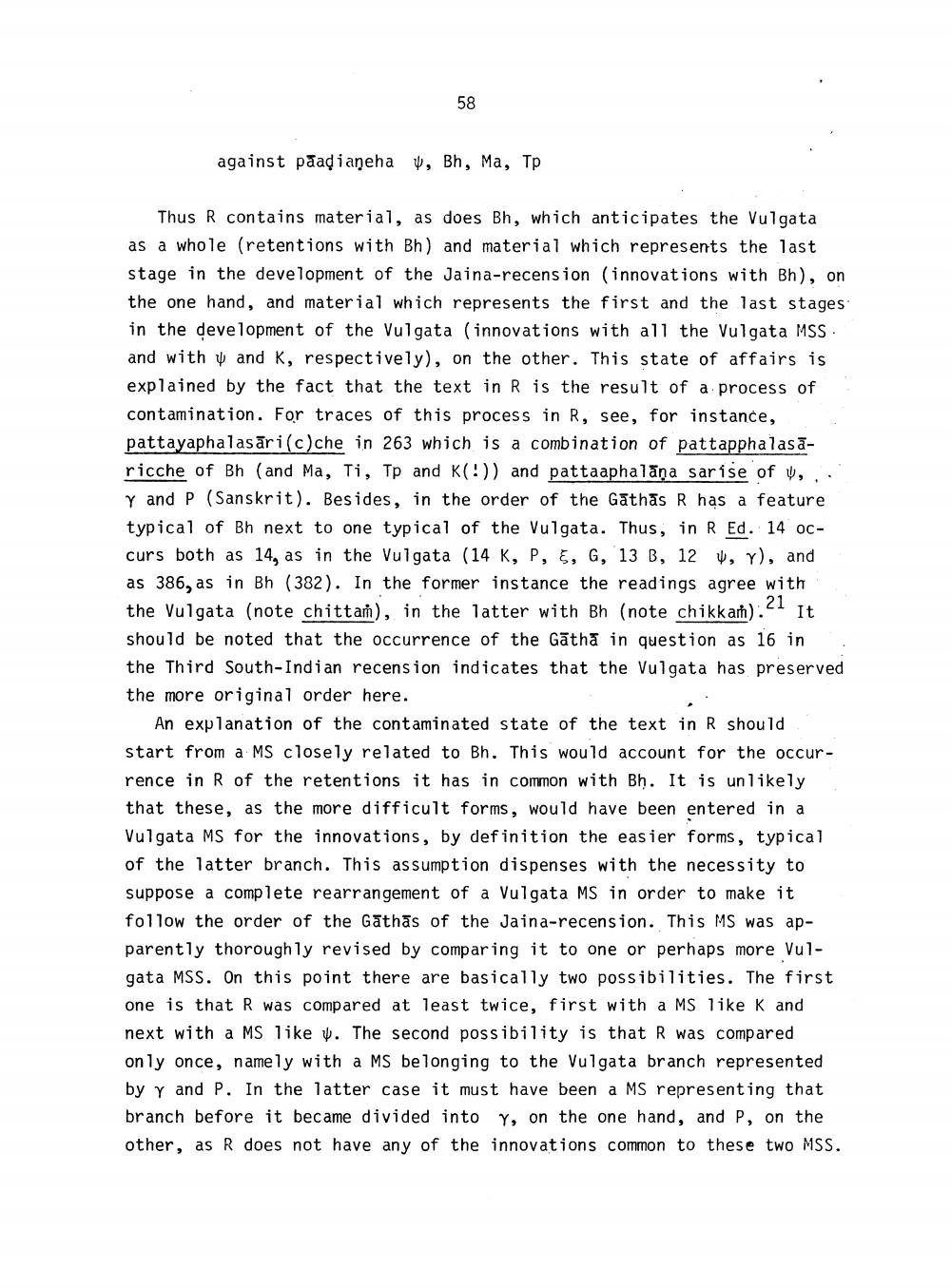________________
58
against paadianeha
, Bh, Ma, Tp
Thus R contains material, as does Bh, which anticipates the Vulgata as a whole (retentions with Bh) and material which represents the last stage in the development of the Jaina-recension (innovations with Bh), on the one hand, and material which represents the first and the last stages in the development of the Vulgata (innovations with all the Vulgata MSS and with y and K, respectively), on the other. This state of affairs is explained by the fact that the text in R is the result of a process of contamination. For traces of this process in R, see, for instance, pattayaphalasāri(c)che in 263 which is a combination of pattapphalasāricche of Bh (and Ma, Ti, Tp and k(!)) and pattaaphalāņa sarise of v, .. Y and P (Sanskrit). Besides, in the order of the Gathās R has a feature typical of Bh next to one typical of the Vulgata. Thus, in R Ed. 14 occurs both as 14, as in the Vulgata (14 K, P, E, G, 13 B, 124, Y), and as 386, as in Bh (382). In the former instance the readings agree with the Vulgata (note chittaṁ), in the latter with Bh (note chikka):21 It should be noted that the occurrence of the Gātha in question as 16 in the Third South-Indian recension indicates that the Vulgata has preserved the more original order here.
An explanation of the contaminated state of the text in R should start from a MS closely related to Bh. This would account for the occurrence in R of the retentions it has in common with Bh. It is unlikely that these, as the more difficult forms, would have been entered in a Vulgata MS for the innovations, by definition the easier forms, typical of the latter branch. This assumption dispenses with the necessity to suppose a complete rearrangement of a Vulgata MS in order to make it follow the order of the Gathās of the Jaina-recension. This MS was apparently thoroughly revised by comparing it to one or perhaps more Vulgata MSS. On this point there are basically two possibilities. The first one is that R was compared at least twice, first with a MS like K and next with a MS like y. The second possibility is that was compared only once, namely with a MS belonging to the Vulgata branch represented by Y and P. In the latter case it must have been a MS representing that branch before it became divided into y, on the one hand, and P, on the other, as R does not have any of the innovations common to these two MSS.




